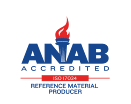NCI-H441 [H441]
CRM-HTB-174 ™
Explore our dataCRM-HTB-174 ™
Explore our dataATCC determines the biosafety level of a material based on our risk assessment as guided by the current edition of Biosafety in Microbiological and Biomedical Laboratories (BMBL), U.S. Department of Health and Human Services. It is your responsibility to understand the hazards associated with the material per your organization’s policies and procedures as well as any other applicable regulations as enforced by your local or national agencies.
ATCC highly recommends that appropriate personal protective equipment is always used when handling vials. For cultures that require storage in liquid nitrogen, it is important to note that some vials may leak when submersed in liquid nitrogen and will slowly fill with liquid nitrogen. Upon thawing, the conversion of the liquid nitrogen back to its gas phase may result in the vial exploding or blowing off its cap with dangerous force creating flying debris. Unless necessary, ATCC recommends that these cultures be stored in the vapor phase of liquid nitrogen rather than submersed in liquid nitrogen.
The line has been used as a transfection host for expression of pulmonary surfactant protein (SP-B).
Certified Reference Material produced under an ISO 17034 accredited process.
Item has been tested for KRAS mutation (p.G12V c.35G>T)
The cells can be cloned in soft agar with or without serum.
The cell line expresses mRNA and protein of the major surfactant apoprotein (SP-A).
Certificates of Analysis are available electronically at www.atcc.org, or by hardcopy upon request.
Subcultivation Ratio: A subcultivation ratio of 1:3 to 1:8 is recommended
Medium Renewal: 2 to 3 times per week
Manufactured under an ISO 17034 accredited process

Certified Reference Material produced under an ISO 17034 accredited process.
The product is provided 'AS IS' and the viability of ATCC® products is warranted for 30 days from the date of shipment, provided that the customer has stored and handled the product according to the information included on the product information sheet, website, and Certificate of Analysis. For living cultures, ATCC lists the media formulation and reagents that have been found to be effective for the product. While other unspecified media and reagents may also produce satisfactory results, a change in the ATCC and/or depositor-recommended protocols may affect the recovery, growth, and/or function of the product. If an alternative medium formulation or reagent is used, the ATCC warranty for viability is no longer valid. Except as expressly set forth herein, no other warranties of any kind are provided, express or implied, including, but not limited to, any implied warranties of merchantability, fitness for a particular purpose, manufacture according to cGMP standards, typicality, safety, accuracy, and/or noninfringement.
This product is intended for laboratory research use only. It is not intended for any animal or human therapeutic use, any human or animal consumption, or any diagnostic use. Any proposed commercial use is prohibited without a license from ATCC.
While ATCC uses reasonable efforts to include accurate and up-to-date information on this product sheet, ATCC makes no warranties or representations as to its accuracy. Citations from scientific literature and patents are provided for informational purposes only. ATCC does not warrant that such information has been confirmed to be accurate or complete and the customer bears the sole responsibility of confirming the accuracy and completeness of any such information.
This product is sent on the condition that the customer is responsible for and assumes all risk and responsibility in connection with the receipt, handling, storage, disposal, and use of the ATCC product including without limitation taking all appropriate safety and handling precautions to minimize health or environmental risk. As a condition of receiving the material, the customer agrees that any activity undertaken with the ATCC product and any progeny or modifications will be conducted in compliance with all applicable laws, regulations, and guidelines. This product is provided 'AS IS' with no representations or warranties whatsoever except as expressly set forth herein and in no event shall ATCC, its parents, subsidiaries, directors, officers, agents, employees, assigns, successors, and affiliates be liable for indirect, special, incidental, or consequential damages of any kind in connection with or arising out of the customer's use of the product. While reasonable effort is made to ensure authenticity and reliability of materials on deposit, ATCC is not liable for damages arising from the misidentification or misrepresentation of such materials.
Please see the material transfer agreement (MTA) for further details regarding the use of this product. The MTA is available at www.atcc.org.
If shipping to the U.S. state of Hawaii, you must provide either an import permit or documentation stating that an import permit is not required. We cannot ship this item until we receive this documentation. Contact the Hawaii Department of Agriculture (HDOA), Plant Industry Division, Plant Quarantine Branch to determine if an import permit is required.
This cell line was deposited by Dr. A. Gazdar and is provided for research purposes only. This material is subject to the following restrictions in addition to those outlined in the ATCC Material Transfer Agreement:
National Cancer Institute (NCI)
Email: [email protected]
Bepler G, et al. Expression of p64c-myc and neuroendocrine properties define three subclasses of small cell lung cancer. Oncogene 4: 45-50, 1989. PubMed: 2536917
Brower M, et al. Growth of cell lines and clinical specimens of human non-small cell lung cancer in a serum-free defined medium. Cancer Res. 46: 798-806, 1986. PubMed: 3940644
Broers JL, et al. Spontaneous changes in intermediate filament protein expression patterns in lung cancer cell lines. J. Cell Sci. 91: 91-108, 1988. PubMed: 2473086
O'Reilly MA, et al. Differential effects of glucocorticoid on expression of surfactant proteins in a human lung adenocarcinoma cell line. Biochim. Biophys. Acta 970: 194-204, 1988. PubMed: 3382698
O'Reilly MA, et al. In vitro translation, post-translational processing and secretion of pulmonary surfactant protein B precursors. Biochim. Biophys. Acta 1011: 140-148, 1989. PubMed: 2713400
